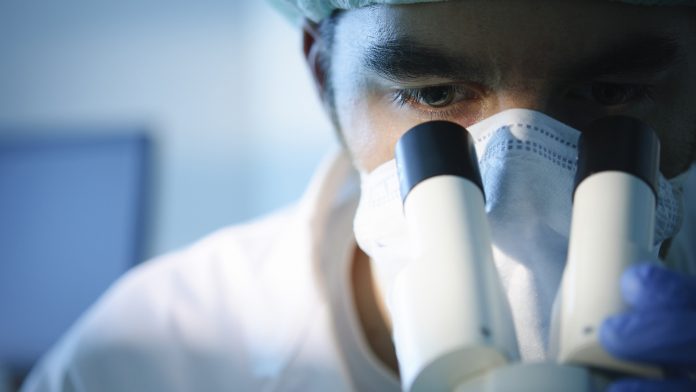
Ahead of the EU’s revision of the regulatory framework governing orphan drugs, we spoke to the European Medicines Agency about some of the key challenges in developing rare disease therapies and how the agency is supporting improvements in this field.
Rare diseases affect some 30 million people in Europe alone, with between 5,000 and 8,000 disease types known to exist. As well as challenges around the clear diagnosis and disease management, when it comes to developing new therapies for rare diseases, developers can face a myriad of issues that can inhibit their product from reaching the market. As part of its remit to authorise orphan drugs, and improve treatment options for patients, the European Medicines Agency offers initiatives to enhance product development and, importantly, welcomes patient feedback through its Committee for Orphan Medicinal Products (COMP).
To find out more about the EMA’s role within the rare diseases space, and how it is helping to mitigate challenges faced by orphan drug developers, Health Europa Quarterly spoke to the EMA’s Head of Orphan Medicines, Kristina Larsson.
What is the role of the EMA within the orphan drugs and rare diseases space?
Our role is predominantly regulatory and supports the regulation of orphan drugs. The Regulation (EC) No 141/2000 (the Orphan Regulation) is now over 20 years old and works as the legal basis for the development of rare disease treatments. We have a committee which can grant orphan designations for products showing some evidence that they can be used in a particular rare disease.
In Europe, we define a rare disease as affecting less than five in ten thousand people and this number is generally accepted across Europe and is similar to the rest of the world.
As well as a designation, product developers receive incentives, which can include protocol assistance or scientific advice to help them further develop their product. At the market authorisation stage, there is a possibility to have market exclusivity for 10 years, this is not a monopoly, but does protect them against similar medicines or products.
We like to see the designation that we give as a key opportunity for developers. Often, the orphan designation is the first port of entry for developers who come to us at a very early stage, frequently only with preclinical data.
There are also other avenues within the agency including special incentives and programmes for academic groups, for example, support for small to medium-sized enterprises and the innovation task force.
What are some of the key obstacles that have limited innovation and patient access to novel medicines?
All orphan drugs in Europe have to be authorised by the European Medicines Agency and subsequently the European Commission, but despite authorisation, we know that approved products are not always available to eligible patients. This can be frustrating for us, especially as our ultimate aim is to try and improve patients’ lives through the authorisation of these products.
Another major hurdle is simply knowledge about a rare disease. With some rare diseases, we do know a lot and we see a lot of development, which is encouraging. If there is an innovation, target, or new information about a disease, for example, we may see quite a few applications for designations.
Trials for orphan drugs may rely on certain endpoints, which can be difficult to measure. There may be a lack of non-clinical and preclinical models and even if clinical trials can be designed, the patient population can be very dispersed and heterogeneous. There may also be a span of mild to very severe phenotypes and a mix of age groups, so it is difficult to choose your patient population to include in a study. Sourcing the necessary expertise and research facility can also be a challenge. Of course, without the guarantee that the research will be successful, and a new drug will benefit the patient, investors can be resilient to fund such endeavours. In some cases, we do see clinical trials that include a couple of hundred patients, and this is a high number for rare diseases, but if you compare that to cardiovascular studies for instance, where you have several thousand patients, it is a markable difference.
Of course, we see a lot of new, advanced treatments and those have an additional aspect of difficulty because we do not necessarily know how the products should be best used.
Can you highlight some of the key challenges orphan drug developers may face when bringing new treatments to the market?
To bring anything to market, drug developers need approval from the agency and any potential challenges incurred will really depend on how and where they want to market their product.
There is one part of the orphan legislation that has never really been used which relates to the possibility of designating a drug not based on rarity but based on the fact that the product would not generate enough return on investment. It has proved to be incredibly difficult, both from our own and the developers’ point of view because to say that there will not be enough return on investment prevents development. There has to be some return for the development to take place.
How important is patient involvement in rare disease research and orphan drug development?
Patient involvement is really important, and the agency does a lot with patients via the Committee for Orphan Medicinal Products. They have three patients on the Committee and when it comes to protocol assistance, we ensure patients are actively involved.
At the marketing authorisation stage, when we receive questions regarding the major contribution to patient care, we will always involve patients because what we might think is self-evident, and good for the patient, is not always what the patients themselves may think.
It is also important to consider the endpoints that matter most to the patients and again this is why their opinion is important when developing new medicines and determining what should be measured in clinical studies for example.
What is the significance of the pilot project to support the repurposing of medicines, how will this support access to rare disease therapies?
The project was developed specifically to help non-profit organisations and academic institutions and individuals who would like to repurpose medicines for new indications. This should not only be an off-label, used indication, the basic idea is that someone has identified the mechanism of action of a product which could be very beneficial in a rare disease patient population, and therefore, would like to repurpose it and carry out studies.
As an agency, we can support these developments by waiving the fees for scientific advice. Of course, if there is already an orphan designation for these products, they will not need it.
The EMA and the Member States have now received the applications which are undergoing assessment and we hope to be able to launch projects that will benefit from additional advice and regulatory help in the near future.

Can you tell me about any other initiatives that are helping to improve the development of, and access to, rare disease therapies?
There is a lot going on within the agency including ACT EU which is about accelerating clinical trials within the EU, this is not solely for the benefit of orphan drugs, but we hope it will support developers in this field.
Of course, there is a lot of activity within the Commission including funding calls from Horizon Europe. One programme is the development of new effective therapies for rare diseases. Similarly, the European Joint Programme on Rare Diseases (EJP RD) which amalgamates over 130 institutions from 35 countries has a funding mechanism to improve rare disease research. I have been involved in projects with the International Rare Diseases Research Consortium (IRDiRC) looking at specific designs for small clinical trials. There is also the European Rare Disease Research Coordination and Support Action consortium (ERICA), supported by all 24 European Reference Networks (ERNs), which focuses specifically on R&D.

The new legislative proposal for orphan legislation will be presented by the end of this year and we hope the changes introduced will make the legislation even better suited to cater for patients with rare diseases.
Kristina Larsson
Head for Office for Orphan Medicines in Product Development Scientific Support Department
European Medicines Agency
https://www.ema.europa.eu/en
https://www.linkedin.com/company/european-medicines-agency/
https://twitter.com/EMA_News
https://www.youtube.com/user/emainfo/
This article is from issue 22 of Health Europa Quarterly. Click here to get your free subscription today.










